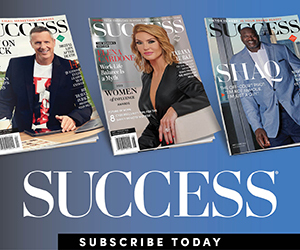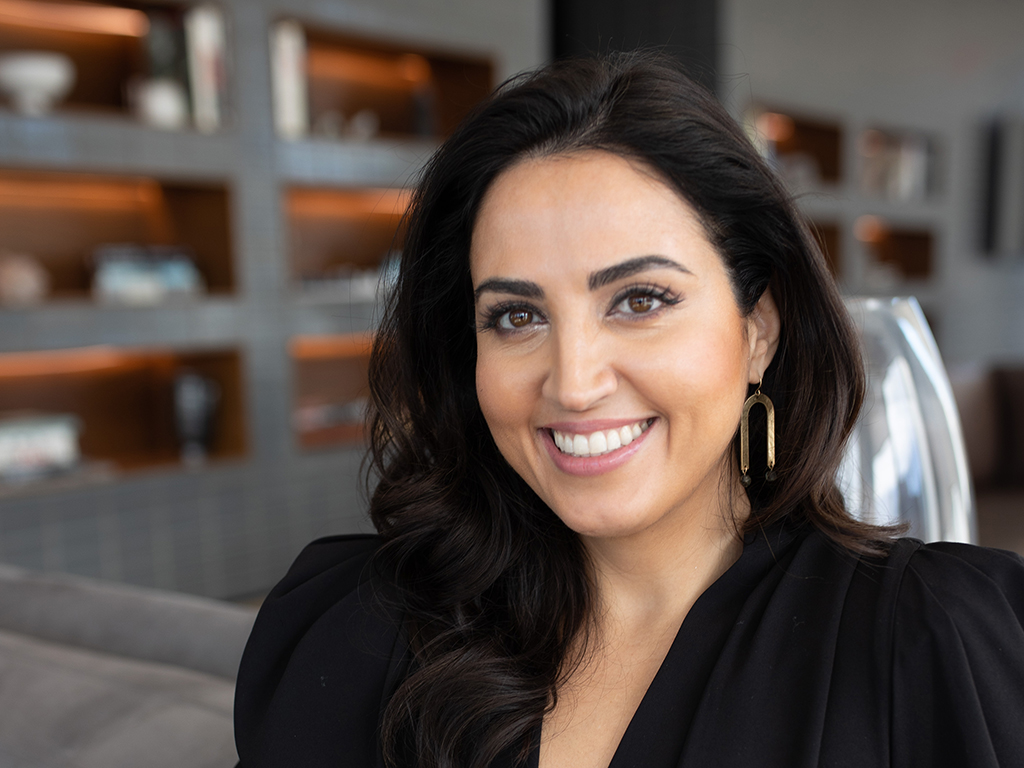Practically all of us wonder whether our job is “right” for us at some point. Maybe it’s an ongoing interpersonal conflict or a feeling your input is undervalued. Maybe you just have a nagging sense there might be something better out there. But is it time to move on to something new, or should you adapt and reconstruct your current role? Amina AlTai can help you figure it out.
AlTai’s coaching helps leaders and executives make work something they “freaking love,” and why shouldn’t you freaking love it? We spend the majority of our time working anyway.
“It eclipses time with our families and our passion projects, and I think it should feel really good,” AlTai says. “Because when it doesn’t, it exacerbates stress and illness.”
She knows firsthand that the dangers of overworking yourself aren’t hypothetical. Early in her career in marketing and brand management, AlTai was always in “go” mode, giving 110% and spending the bulk of her time and effort caring about everyone’s problems but her own. The stress caught up with her. She developed two autoimmune diseases, and finally a doctor told her: If you don’t go to the hospital instead of work today, you’re at risk of multiple organ failures.
“I call it my stop moment, where I realized I couldn’t keep going the way that I was going,” she says. “I had a dysfunctional relationship with work and success, and if I didn’t reframe that and shift it, I probably wasn’t going to be here too much longer.”
Today, AlTai helps others rediscover their passion around their mindset, career and well-being. She shares the difficulties of being a leader, managing burnout and the importance of letting yourself feel fear.
Q&A with Amina AlTai
SUCCESS: What are some roadblocks leaders and executives often face in their roles that their employees may not see or realize they’re dealing with?
Amina AlTai: I think, so much of the time, good leaders and executives are absorbing a lot of the business stress to protect their teams. And so they might have a lot more pressure about business growth, about keeping the business alive, that we’re not privy to when we’re earlier in our careers. A lot of that strategic vision and company growth rests on executives’ shoulders.
One of the reasons I’m such a proponent of doing this work with leaders and executives is because I want to help them carve out the time to pass the knowledge onward. So much of the investment in coaching programs is just for the C-suite, and then they can spend less than 10% of their time sharing that knowledge or passing it onward. I think if we teach people tools in a supportive way, they can carve out time for it to trickle down the organization, and it just benefits everybody.
S: When you’re talking to leaders who feel like they’ve hit a wall, are there ways to tell if they’re burnt out and just need a break or need to move on to something new?
AA: So, in 2019, the World Health Organization was like, “Okay, so burnout’s an actual phenomenon, and there are very specific characteristics.” It’s basically feeling depleted and exhausted; it’s feeling emotionally distant from our work—even feeling negative and cynical about it—and then reduced efficiency around our contribution at work.
Those three signals often tell us: This is burnout. And it can really benefit us to have a pause then and there, because that’s not necessarily saying, “I don’t like my role,” or “I feel like there’s friction in my role.” If you’re feeling those things, it’s great to see if you can take a bit of a pause to nurture and nourish yourself and invest in self-care and community care.
The question of, “Is my role misaligned?” is much bigger. With my clients, a lot of the times it shows up as physical illness or it impacts their mental health—so they’re dealing with depression or anxiety or they might have an autoimmune issue come up. I like to use a five-part framework where we look at people’s gifts, what they value, what they want to impact, what brings them joy and what they need. And take them through each part of that framework and weigh it against their current role.
S: We all have bad days at work—no job is all sunshine and roses—but those five facets of the framework help you figure out if there’s a pattern of misalignment beyond the day-to-day challenges.
AA: Exactly! And when you feel friction, being able to break it down is so important. Is this an interpersonal challenge? Is it a situational challenge? Is it a cultural challenge? Once we can diagnose it, then we can piece it apart and work on it.
S: Your website mentions that you enjoy working with women, and specifically women of color. Are there certain challenges you find these groups face when it comes to career satisfaction?
AA: Ninety-eight percent of my practice is women, and 60% are women of color who occupy other intersections. And depending on the intersectionality, there often are different headwinds and tailwinds. I’m currently writing my book on ambition, and even [with] the word “ambition,” the connotations for men are much more positive; when we’re talking about an ambitious woman, the connections are much more negative. The word “power,” when associated with a man, has much more positive connotations than when associated with a woman.
The broken rung, navigating the glass cliff—all of those are things that women and people of color tend to navigate more than their male counterparts. And I’m not saying that the world of work is easy for [cisgender and heterosexual] white men. I think what we’re seeing is the world of work is kind of broken for everybody, but more so for women and other historically excluded people.
S: What’s some advice you can give to people who want to get over the fear of starting over or pivoting?
AA: I think we’re going to feel fear either way. There’s going to be a fear of stagnation if we stay in the place that isn’t meant for us, and there’s a fear of growth and change and not knowing what’s on the other side. Most of us like to stay in our comfort zones, even if it’s super dysfunctional, because our nervous system is kind of attuned to it. We’re like, “Oh, this is OK. I actually know this better than I know change and unfamiliarity.”
Making ourselves feel safe around a change is one of the best things I think we can do, and there are specific mindfulness and somatic practices we can do to support that. But we’re going to feel fear regardless. Allowing fear not to be the enemy but to be information is really important.
Photo by Laurel Creative.



